Gallery Network
7 Questions for British Artist Simon Hitchens on How Geology Shapes His Sculptural Practice
The artist's solo show is curated by Close Ltd.
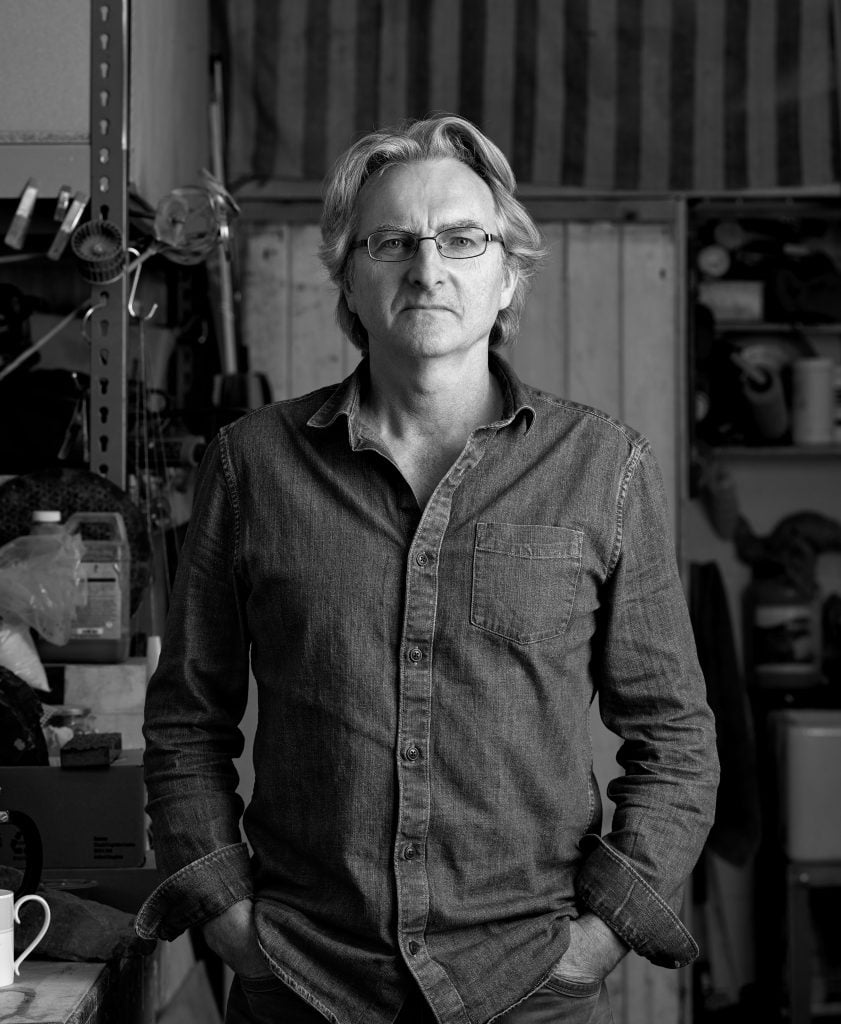
The artist's solo show is curated by Close Ltd.

Artnet Gallery Network

Earlier this year, Somerset-based gallery Close Ltd. announced the representation of multidisciplinary artist Simon Hitchens, recognized for his abstract works that interrogate the natural world. On view through December 2, 2023, at the Somerset Rural Life Museum in Glastonbury, “Parallels: An Exhibition of Sculpture and Drawings by Simon Hitchens” highlights the artist’s recent and ongoing project of observing and documenting through artistic means elements of time, temporality, and the natural landscapes of the entire length of the British Isles. Curated by Close Ltd.’s Creative Director Freeny Yianni, and produced in collaboration with the South West Heritage Trust, the show traces Hitchens’s meticulous journey, including finding rock from various geological latitudes and using it as a form from which to draw idiosyncratic shadow lines.
We caught up with the artist to learn more about what went into this expansive endeavor—both creatively and practically—and what he’s planning to work on next.
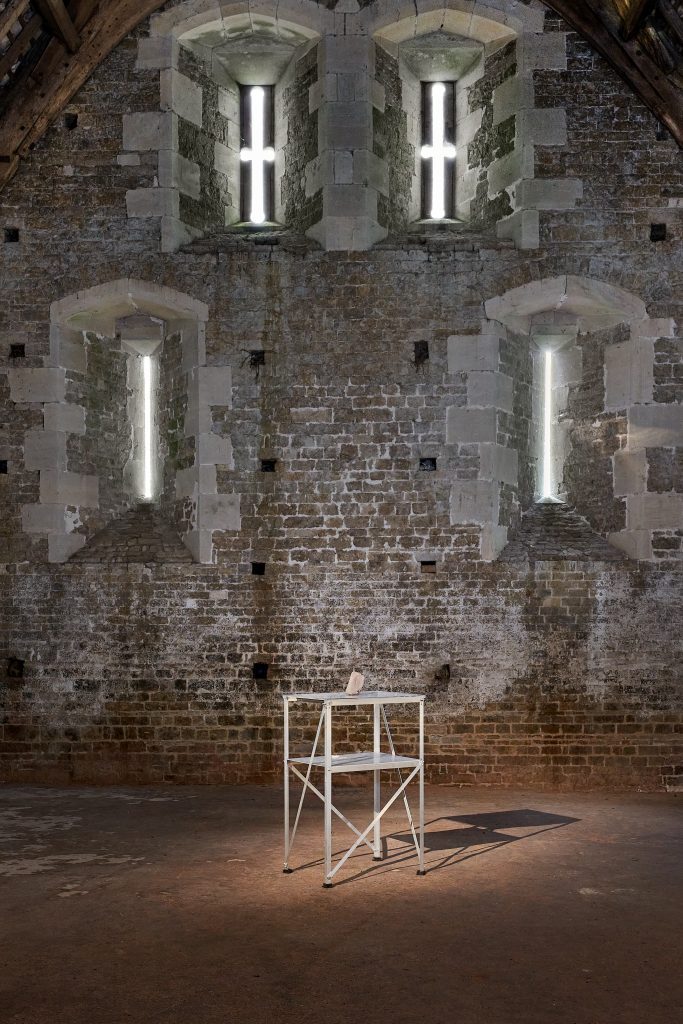
Installation view of “Parallels” (2023), featuring the artist’s drawing table, at the Somerset Rural Life Museum, Glastonbury. Curated by Close Ltd. Courtesy of the artist.
Your solo show “Parallels” goes on view at Somerset Rural Life Museum in collaboration with Close Ltd this month, can you tell us a bit about the body of work going on view and the inspirations behind the show?
For three weeks spanning the autumn equinox of 2019, I traveled the full height of the British Isles—from latitude 50 in Cornwall to latitude 60 in Shetland. The purpose of my journey was to find rocks from 11 different geological time periods and to make a durational day drawing of the shadow lines cast from each rock, on each of the 11 lines of latitude. Shadows cast from a 12th geological object, a discarded lump of plastic, were drawn on a landfill site near London. These are process-based drawings made in, of, and about the landscape, the result of a particular set of conditions, in a particular place, over a particular span of time. They record celestial time, geological time, and human time as well as the weather patterns unique to that day and site: a meditation on time and space.
Can you talk about the “Noontide” shadow sculptures and the process behind them?
The twelve sculptures are casts of the midday shadows from each of the 12 geological time periods, directly indexed to each drawing and quite literally making the fourth dimension three-dimensional. Made from cast iron, they give form to the negative, liminal space of shadows. They accurately record the haptic qualities of the earth’s geology at a specific time and location, linking us to the past through the present and connecting us to something larger than ourselves. To make these sculptures I went through seven different processes of casting positive and negative molds from the original object, each one enabling me to get a step closer to realizing an accurate record of an actual yet ephemeral phenomena of a shadow. It took me months to work out how to achieve it.
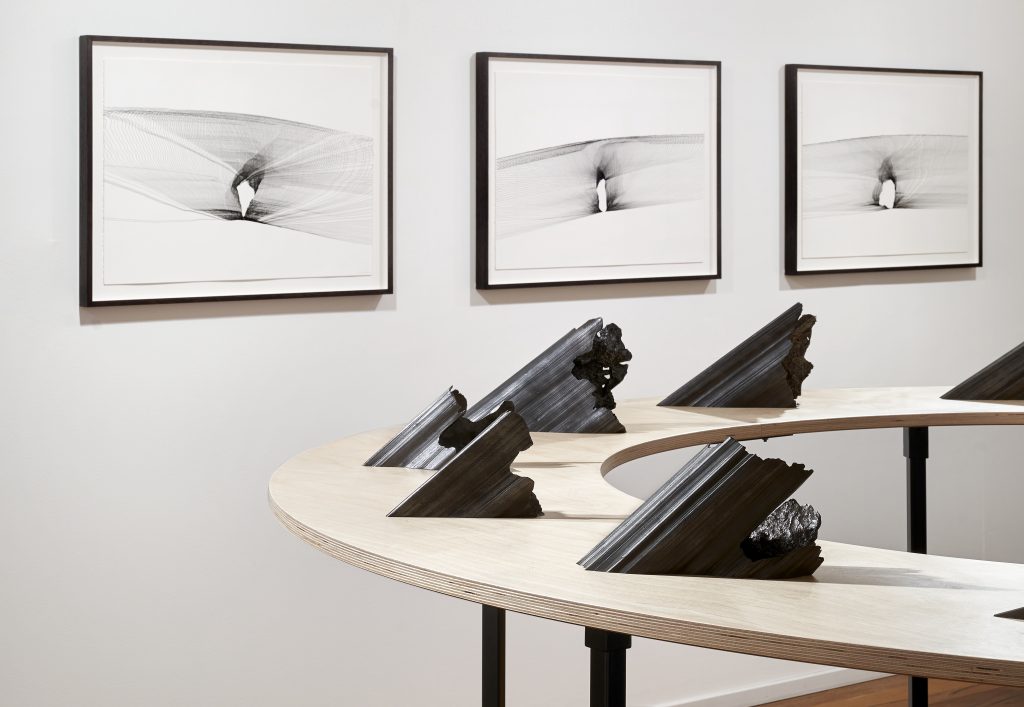
Installation view of “Parallels” (2023) at the Somerset Rural Life Museum, Glastonbury. Curated by Close Ltd. Courtesy of the artist.
What initially drew your interest to geology and more specifically the Somerset locale as a major theme in your works?
Rock has always fascinated me. I first started to climb it in my teens, but then, at art school, became aware that it was the prime sculpting material throughout the world over millennia. In the ’90s, I exclusively carved stone to make increasingly minimal sculpture, and it has continued to be the conceptual focus of my work and typically the material backbone within it. Whilst I live in Somerset, I work and exhibit across the country. The first explorations into these durational day drawings were made close to my studio in Somerset, before the journey across the U.K. that became “Parallels.” A film was commissioned for this exhibition, of me making a drawing on the Summit of Somerset, Dunkery Beacon on Exmoor, and I will be making a durational day drawing on Glastonbury Tor this equinox. I guess it’s a matter of expediency, the location where I live.
What are some of the key takeaways you hope visitors of the exhibition have?
The work explores time and transience and the interconnected nature of what we share with the world. I hope that, through the beguiling drawings and sculptures, the audience’s curiosity and inquisitiveness start thinking along the lines of: What is this? How and why was it made? What is the artist’s intention? I believe the film goes some way to generously revealing the processes of making these drawings and through that, adds to the audience’s fascination. The published book of the project, titled Parallels, reveals an even greater depth of intention and process, which I believe only adds to my exploration of time and transience.
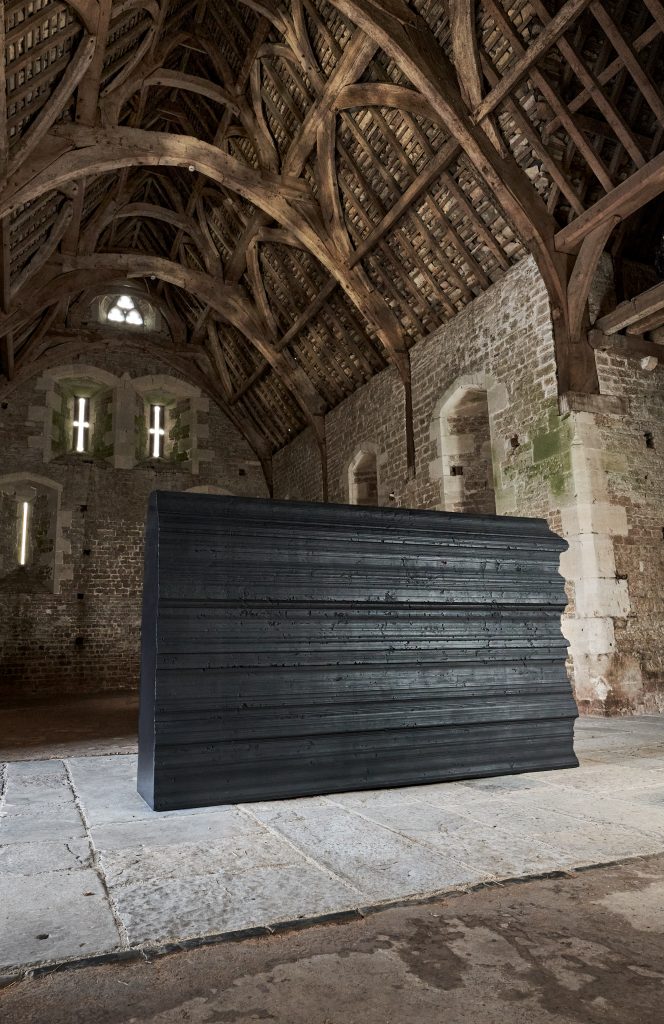
Simon Htchens, Bearing Witness to Things Unseen (2022). Courtesy of the artist.
How would you describe your creative process, is it more spontaneous or do you plan everything out?
Both. The genesis was a typical fleeting moment of creative thought, four years ago. That nugget gnawed away at me daily; I fed it, nurtured it, explored, and challenged it until it became a project to unfold across the U.K. There was in-depth planning for weeks beforehand: researching OS maps, geological maps, and Google maps. I needed to meticulously plan my drawing kit, as everything—drawing table, paper, clothes for all weathers, food and drink to sustain me over fourteen hours—needed to be carried in a rucksack. I researched the specific sites for clear views of the rising and setting sun. Even now I am starting to plan for a day’s drawing in a couple of days’ time, because once I’m on site and the sun has risen, I’m glued to the spot, relentlessly drawing until the sun disappears—there is absolutely no opportunity to take a break at will. But the genesis of each drawing, the decision to make one, or indeed a sculpture, is always much more fluid and spontaneous.
Who or what do you think has had the greatest influence on your work? Are there any artists or movements, historical or contemporary, that you return to for inspiration?
Undeniably, landscape is the greatest influence in my work: physically, emotionally, conceptually, and historically it is an endless source of inspiration and support to me. I grew up surrounded by my father’s and grandfather’s oil paintings of landscapes—I can smell the heady aroma of turpentine now. I’ve been climbing hills and mountains since I was a child and these raw, natural experiences of the world always sustain me. I continue to be inspired by 20th- and 21st-century artists who work with land and scape in oblique ways. Artists who explore human’s relationship with the world and whose work has humility of approach yet an expansive reach of vision. Artists who challenge me as a human being.
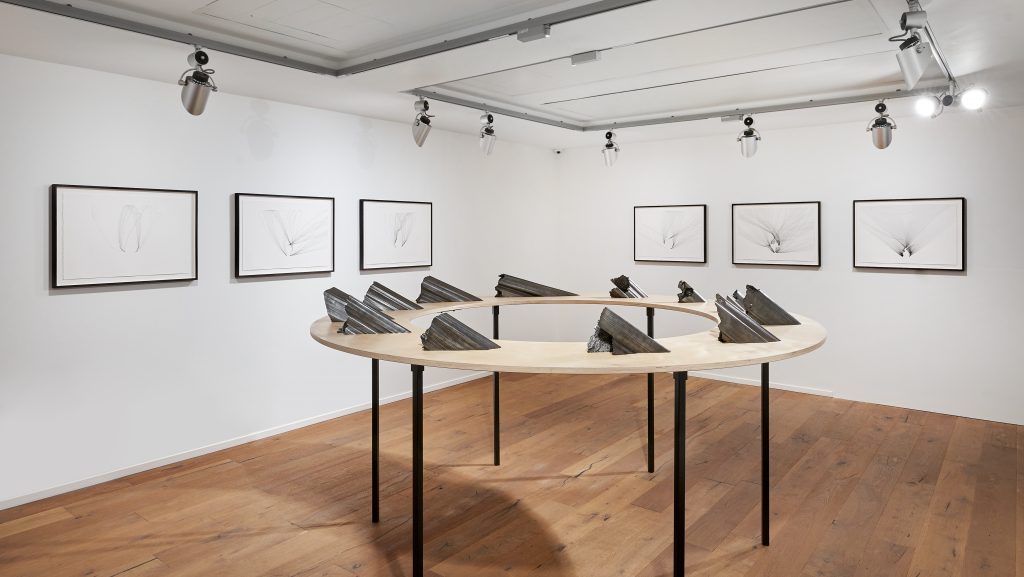
Installation view of “Parallels” (2023) at the Somerset Rural Life Museum, Glastonbury. Curated by Close Ltd. Courtesy of the artist.
Are there any projects you are working on now, or planning to work on next, that you can tell us about?
I’m currently making work for an exhibition at Hestercombe Gallery, “Landscapes of Progress?” which opens in November. This expands the theme of time and transience by making a site-specific drawing and three integral sculptures. I’m enjoying thinking through how best to present this work, so that it’s seen as one work, made up of four individual pieces. I’m also working on a monumental sculpture in Northumberland called The Elizabeth Landmark. This 55-meter-tall sculpture has planning permission and we are about to go live with a fundraising campaign. I’ve been working on this for six years now, with a dedicated and every growing team of experts who are laser-focused on pulling it off.
“Parallels: An Exhibition of Sculpture and Drawings by Simon Hitchens” is on view at Somerset Rural Life Museum, Glastonbury, through December 2, 2023.